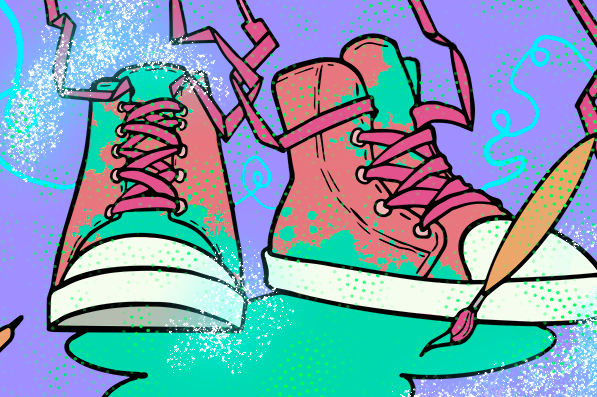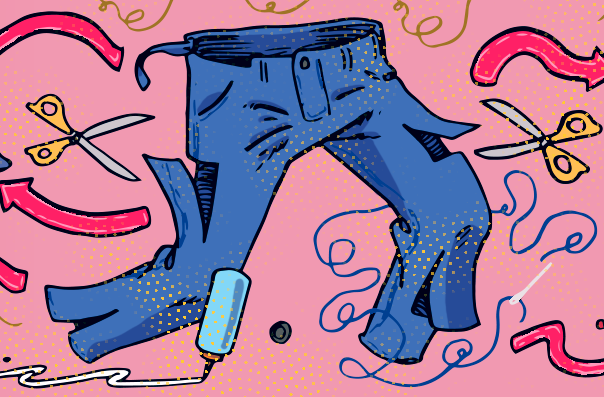
Assessing Actions
Assessing Actions
This project centers on students taking action to address climate change. Encouraging students to take personal actions about climate change can increase student engagement. It can also help students combat climate anxiety. The Actions provided on the student website are authentic learning tasks that can be used as a summative assessment. Students are encouraged to work on developing their Actions throughout the project.
The goal of student actions is to address climate change by either:
- Reducing the amount of clothing that is produced and consumed
- Helping others make more environmentally responsible clothing choices
After identifying some of the environmental impacts of clothing, students brainstorm ways that they could take action to address a particular part of this problem. An example is coming up with a way of reducing the amount of clothing going into landfills.


Depending on your particular classroom constraints, you may have students:
- Choose their own Actions. If you opt to do this, it may be beneficial to review students’ Action Plans with them and give feedback before students begin working.
- Choose from a List of several Actions. You might select several action options from the list on the suggested action ideas page that work well with your curriculum content and timing needs. Actions include activities such as starting an upcycling club, rating a clothing brand and air drying clothing.
- All do the same Action. If you choose this option, consider ways of incorporating student voice and choice into this project. Give students opportunities to decide how they will accomplish this action.
Artifacts: Connecting Actions to Environmental Impacts
It can be challenging for students to connect their own actions and choices to a topic as abstract as climate change. Forming these connections helps your students demonstrate mastery of curriculum outcomes and understand how their choices influence Earth’s climate.
As part of the creation of their learning artifacts, your students should explicitly link how doing the action reduces the environmental impacts of our clothing system.
|
Example Action |
Example Artifact |
|---|---|
|
Restyling your shoes instead of buying new ones |
A student creates a tutorial explaining how extending the life of shoes through restyling means that new shoes do not have to be purchased when one gets bored of their shoes. They explained that by doing this, fewer greenhouse gases were emitted from the production of new shoes. |
|
Starting an Upcycling Club |
A group of students works together to form an upcycling club. Using a Google slide, they explain how their club reduced clothing consumption and increased awareness among their members. They explained that by doing this, fewer greenhouse gases were emitted from the production of new clothes. |
|
Starting a social media campaign |
A student creates a graphically designed image using text and photos for a social media campaign about water usage in clothing production. In it, the student explains that her campaign convinces others to buy less clothing |
Success Criteria and Expectations
Because of the amount of student choice involved with actions and artifacts, it is important that your students have a clear understanding of success criteria. These are co-constructed with input from you and your students during the Choose an Action lesson. The success criteria might be added to the left column of the Rubric Template which can then be used to assess student actions and artifacts.
Specific information around assessment for each topic and exemplar rubrics can be found in the topic assessment guides:
- Climate Change Topic Assessment Guide [Google doc] [PDF]
The success criteria focus on learning goals that are relevant regardless of their project format. Your students may be creating a variety of different products, such as posters, social media campaigns, or videos.
Expectations checklists
Expectations checklists are provided for a variety of different types of artifacts. These focus on format rather than learning goals and can be used for any project. Your students could use expectations checklists to plan their artifacts and self-assess using them before turning anything in. The expectation checklists below can be modified to fit your students’ needs.
Expectation checklists:
- Poster expectation checklist [Google doc] [PDF]
- Slideshow expectation checklist [Google doc] [PDF]
- Paragraph expectation checklist [Google doc] [PDF]
- Video expectation checklist [Google doc] [PDF]